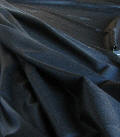Butyl
 The polymer butyl (IIR – isobutylene isoprene – rubber) is an elastomer with a small number of double bonds, produced through co-polymerisation of isobutylene and isoprene.
The polymer butyl (IIR – isobutylene isoprene – rubber) is an elastomer with a small number of double bonds, produced through co-polymerisation of isobutylene and isoprene.
- With careful compounding Butyl has really good tensile strength.
- Butyl has very low permeability to air and other gases.
- Excellent resistance to ozone, oxidation and sunlight.
- Excellent temperature range of -45º C to +130º C for normal compounds and even better with special formulations like cured resin.
- Butyl has very low resilience which makes it ideal for vibration damping and shock absorption applications.
- Butyl has moderate resistance to abrasion and compression set.
- Resistance to chemicals; resistant to most inorganic products. Highly resistant to mineral acids, alkalines and aqueous acids. Not recommended to use in contact with oils, or hydrocarbon solvents.
EPDM
The polymer EPDM, ethylene-propylene rubber, is produced through co-polymerisation of ethylene, propylene and diene monomer, producing a polymer made up of saturated linear macromolecules with a paraffinic structure.
In addition to the base polymer, both EPDM and Butyl contain reinforcing carbon black, fillers, process chemicals, antioxidants and vulcanising agents. After mixing the ingredients into a homogeneous plastic compound, two layers of the rubber are rolled out in a colander to form a double sheet. Vulcanisation is then carried out. The long rubber molecules in the material are cross-linked through heat and pressure, creating an elastic membrane.
- Excellent inherent high and low temperature ranges. Typically -45º C to +120º C for standard compounds.
- Special compounding can increase some grades to function continually at +140 º C.
- E.P’s are inherently resistant to attack by oxygen, U.V., Ozone and extreme weather environments, and will give long service in these conditions.
- E.P’s do not have good adhesion properties and expert advice should be sought from our Technical Department about bounding applications.
- Resistance to Chemicals; resistant to many chemicals and solvents. Good resistance to many corrosive chemicals. The performance of E.P’s in hot water and high pressure steam is better than in dry heat.

